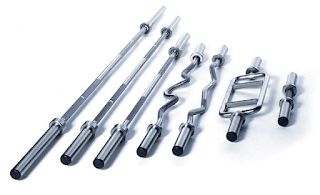The Gain of Having This Exercise Tool At Home
It has become essential for athletes to recognize one of the most effective exercise tools: the gym plate. This tool has become a focal point for all gym-goers and those who prefer working out on their own. Often, athletes wish to exercise in their comfort zones, but lacking the proper tools can be a problem. One simple technique to keep in mind is that exercising at home can improve your state of mind and help those around you stay fit.
A fundamental reason to have a gym plate is its significant impact on your body. It is one of the workout tools that has helped weightlifters achieve their goals. In today's article, we'll explore the simple techniques needed to work out with exercise plates. But first, have you ever wondered what this exercise tool is made of?What Exercise Plates Are Made Of
Exercise plates are a necessity for weightlifting and strength training, and their composition varies based on the quality and intended purpose. The most typical materials consist of:
- Cast Iron: Cast iron plates are popular for use in homes and commercial gyms because they are economical and long-lasting.
- Rubber-Coated Iron: These rubber-coated cast iron plates minimize noise and damage to floors.
- Steel: Premium steel plates are frequently utilized in competitive environments because they are precise and long-lasting.
- Bumper Plates: These plates, which are made of solid rubber and intended for Olympic lifting, can be dropped without risk of flood damage.
Every kind of material has a unique set of advantages that meet the needs of different exercise enthusiasts.
What Techniques Is Best To Workout With Exercise Plates
Exercise plates are adaptable equipment that can improve your regimen for strength training. Here are some practical methods for including them in your workouts:
- Plate Press: To work on your shoulders and triceps, hold a plate with both hands and press it overhead. You can either sit or stand while doing this.
- Russian Twists: With both hands holding a plate, take a seat on the ground with your knees bent. To work your obliques, twist your torso left and right, making sure to touch the plate to the ground next to you each time.
- Plate Squats: Do squats with a plate held close to your chest. Your leg strength and stability will increase as a result of the added resistance.
- Plate Lunges: To up the ante and use your core muscles when lunging, hold a plate above your head or at chest level.
- Overhead Plate Carry: Walk a certain distance while holding a plate above your head. This exercise promotes core strength and stability in the shoulders.
- Plate Rows: With one hand holding a dish, stoop over with your back flat. Lift the plate in the direction of your hips to work your biceps and upper back.
- Plate Push-Ups: When performing push-ups, place plates on the ground and raise your hands using them. This works your chest and triceps while expanding your range of motion.
- Plate Deadlifts: Use a plate in each hand when performing deadlifts to build strength in your hamstrings, glutes, and lower back.
By integrating these techniques into your exercise regimen with a gym plate, you can develop strength, enhance stability, and boost your overall fitness level. It is essential to keep correct form and procedure to prevent injury and fully reap the honors of the exercise.




Comments
Post a Comment